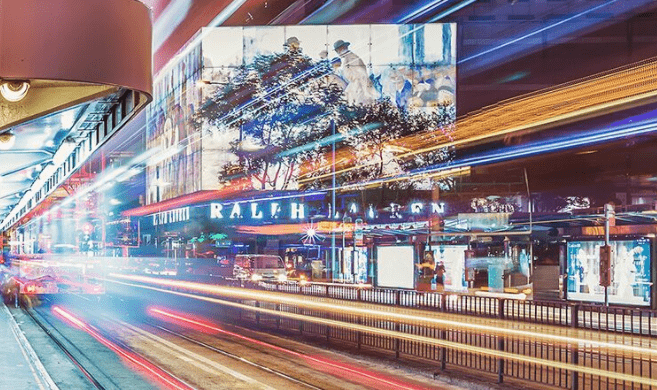China sets new trends in outdoor advertising, it is particular with the increase in urbanization that has caused a predominant congestion throughout that nation, highlighted the Taoping company.
This company is a leading provider of cloud application technologies for Smart City IoT platforms, digital advertising delivery and other Internet-based information distribution systems in China.
According to Taoping, in China’s medium to large cities, people spend an average of 39 minutes of commute time to work.
And according to the China New Kind Urbanization Report (2014-2018), in densely populated first-tier cities including Beijing, Guangzhou and Shanghai, it takes commuters 14, 12 and 11 minutes every day in traffic jams. traffic, respectively.
In particular in Beijing, a megacity of more than 21 million people, the daily commute takes 45 minutes, the worst of all Chinese cities.
Outdoor advertising
While traffic jams are a headache for urban commuters and city planners, Taoping highlights that they present revenue-generating opportunities for advertisers away from home, seeking an attentive audience in high-traffic areas.
According to China Industry Information Net, the total estimated size of China’s outdoor advertising market is expected to reach 227 billion yuan in 2021, with a CAGR of 14 percent.
As cosmetics, beverages and financial services companies rank as the highest consistently spenders, internet and real estate companies also significantly increased their advertising spending.
The growth, as of 2013, can be attributed to three factors, according to Taoping:
The macroeconomic recovery in China has encouraged companies to increase their advertising spending.
Industry leaders have led the consolidation in the outdoor advertising market and increased their market share in premier cities such as Beijing, Guangzhou, Shanghai and Shenzhen.
Lastly, the rapid advancement in the internet and mobile technologies has led to new O2O (offline to online) advertising opportunities.
Market trends
More than 50% of advertisers rated commercial buildings and public transportation hubs as the top two places for ad placement.
As an example: there are more than 200 million people who ride elevators every day in China.
The number of advertisers who opted for residential buildings also increased considerably.
Precision outdoor advertising uses digital technologies, such as internet-based ad management and distribution and big data analytics, to target its audience, and remains the focal point of advertisers, resulting in increasing demand for digital advertising.
In addition to urbanization, two technological developments further accelerate the demand for products and services: migration from offline to online display terminals and adoption of quick response (QR) codes.
![]()

